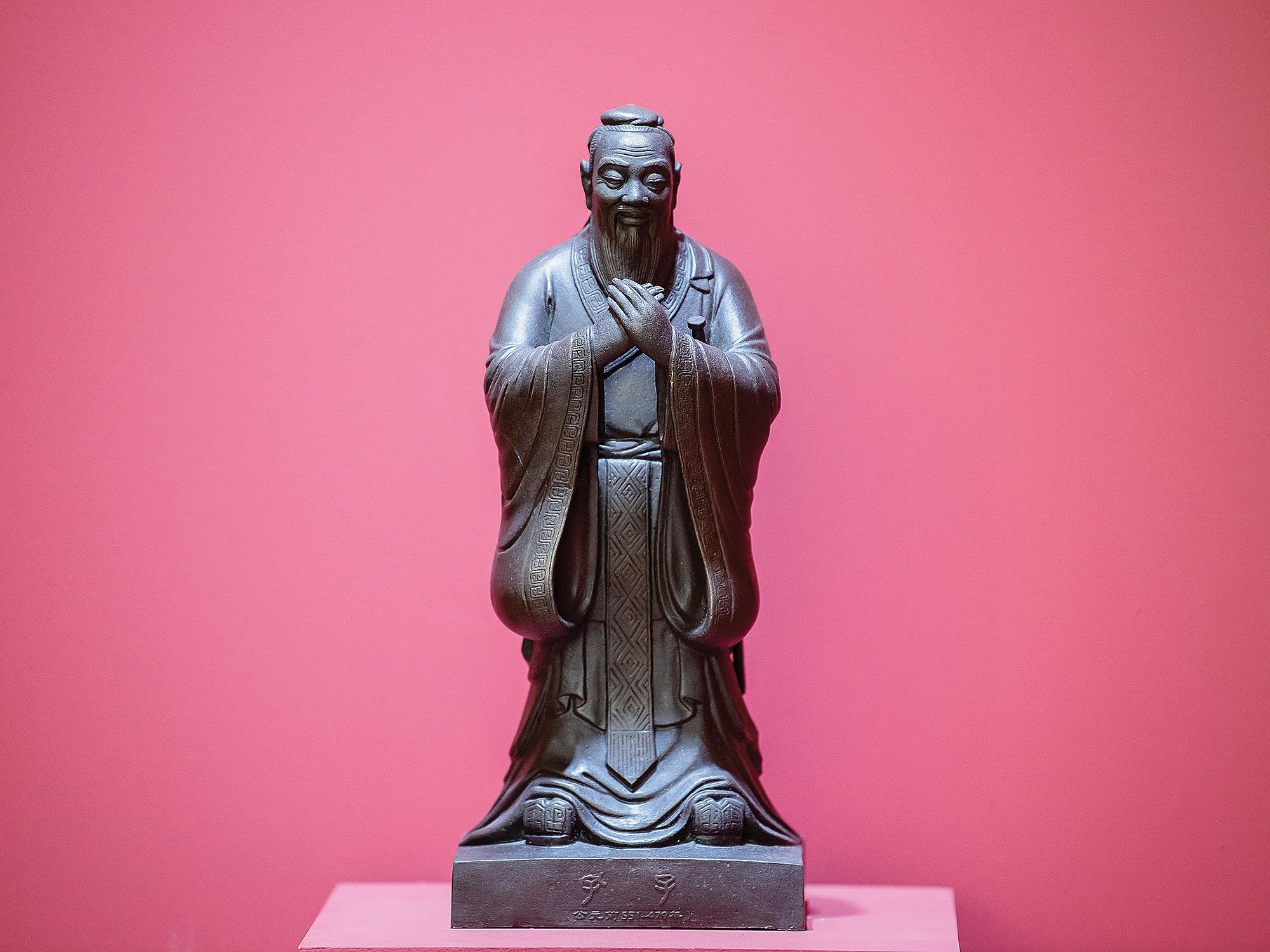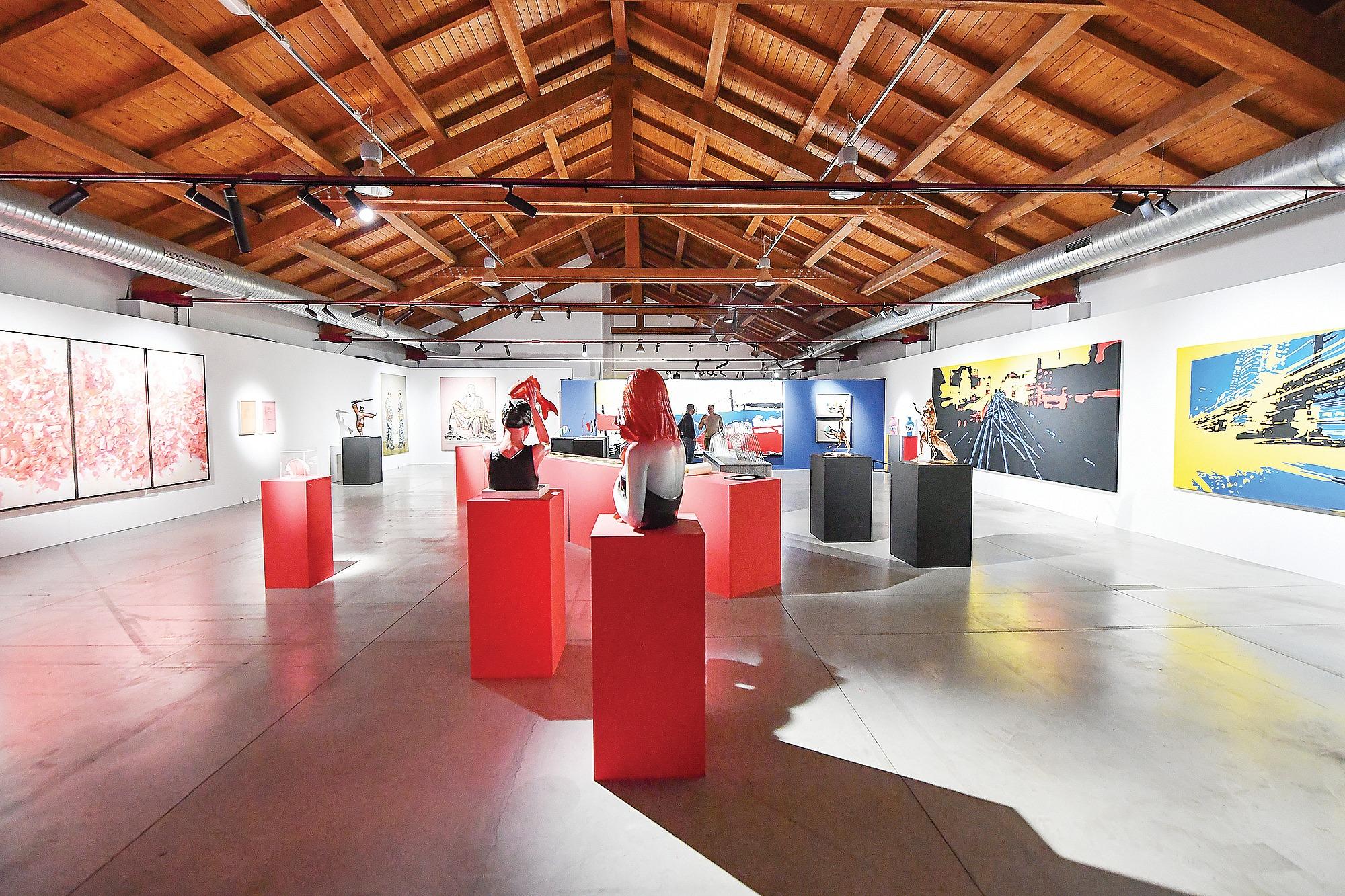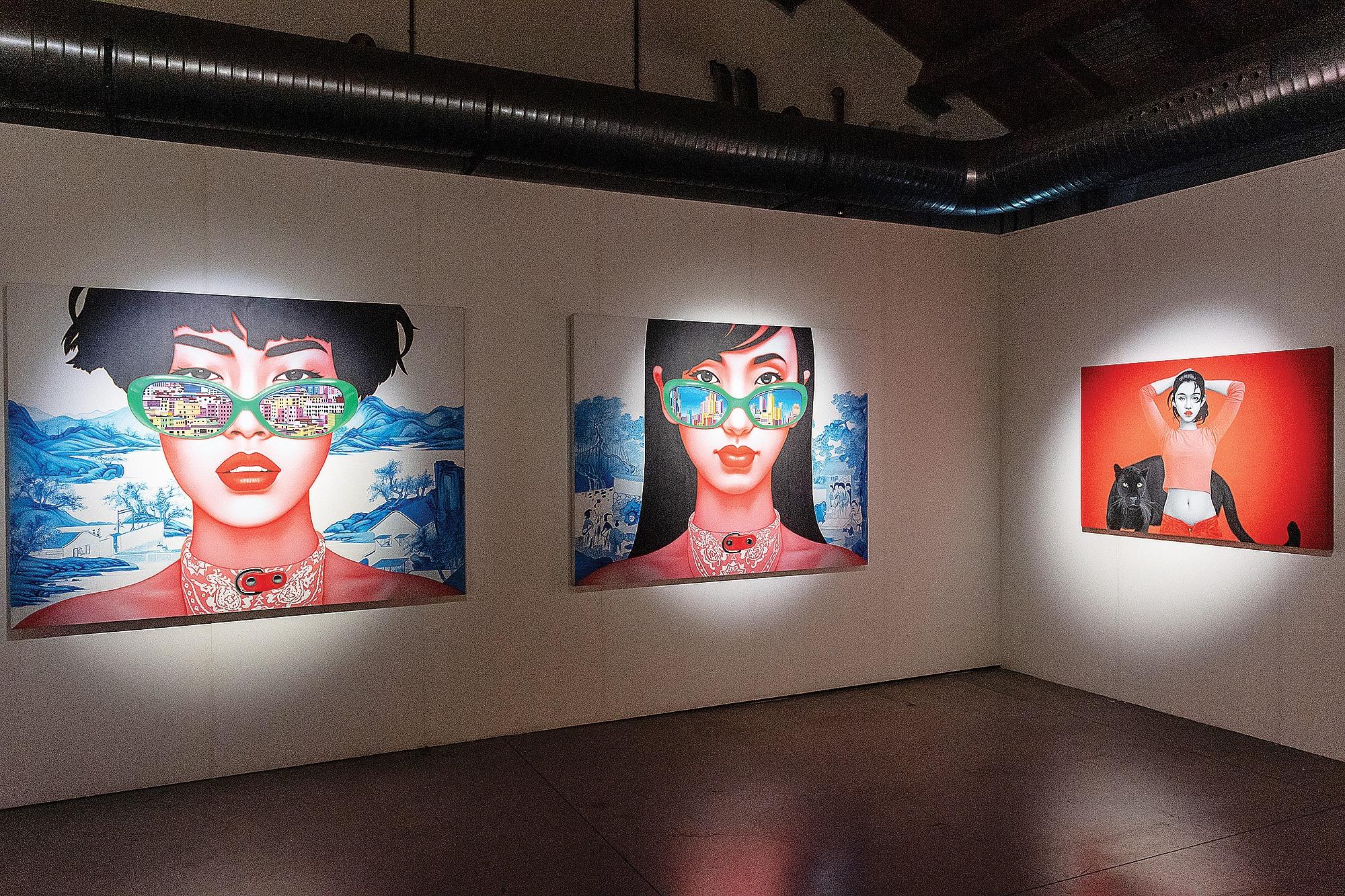 A bronze sculpture of Confucius stands at the entrance to the Cina. (PHOTO PROVIDED TO CHINA DAILY)
A bronze sculpture of Confucius stands at the entrance to the Cina. (PHOTO PROVIDED TO CHINA DAILY)
A bronze statue of Confucius (c 551-479 BC) appears at the very start of the ongoing Cina: La Nuova Frontiera dell’Arte (China: Art’s New Frontier) show in Milan. One wonders if the figure of this paragon of ancient Chinese wisdom, standing at the door, is meant to serve as a symbolic guide, a keeper of the clues required to unravel the complexities of a significant period of Chinese cultural history. The exhibits cover more than 100 years, from 1908, the year China’s last emperor, Puyi, was crowned, to the present.
Some 250 artworks and objects are displayed across two floors of Fabbrica del Vapore, an art gallery in Milan’s Chinatown. These include oil paintings, photographs, calligraphy, ink-and-brush works, sculptures and historical materials.
Curator Vincenzo Sanfo, an expert in contemporary Chinese art, explains that the show is an attempt to provide a Western audience with the tools to help understand the rich variety of artistic expression in today’s China. During much of the 20th century, it was common for Chinese artists to follow the Western stalwarts — the favorites being Warhol, Pollock, Picasso and Dalí. However, their present-day counterparts, as Sanfo points out, are increasingly looking to their own country’s art heritage for inspiration.
 La Nuova Frontiera dell’Arte show in Milan; installation view of the section dedicated to contemporary Chinese art. (PHOTO PROVIDED TO CHINA DAILY)
La Nuova Frontiera dell’Arte show in Milan; installation view of the section dedicated to contemporary Chinese art. (PHOTO PROVIDED TO CHINA DAILY)
There is a section dedicated to artists who, according to the curator, deserve greater international attention. Many of the works featured in it demonstrate brilliant coloring skills, wit and playfulness. Among them are large-scale pop artworks by the Jinan-born Xu Deqi (b 1964), in which women wearing heavy makeup and oversized spectacles appear against the backdrop of antique blue-porcelain-style landscapes. Images from his Beauty and the Beast series show women walking the streets with a big cat, like a leopard or a Bengal tiger, on a lead.
Also featured is the figurative artist Xin Haizhou (b 1966). His acrylic painting canvases are peopled with imposing figures, looking back at the viewers with large, scrutinizing eyes.
Luo Zhiyi (b 1967) is an artist poised between abstraction and realism. Remnants of exploded fireworks are strewn across white canvases in a way that brings to mind torn flowers. Images of firework debris evoke a sense of calm, the canvas becoming a meditative space in the wake of revelry.
Zhang Hongmei (b 1973) uses cloth and acrylic on canvas, making a powerful statement with her City Speed series. With a style echoing that of the French cross-disciplinary artist Sonia Delaunay, Zhang’s works are located at the confluence of painting, fashion and textile design, sculpture and video art.
 Xu Deqi’s large-scale pop artworks often feature women wearing oversized spectacles or in the company of beasts of prey. (PHOTO PROVIDED TO CHINA DAILY)
Xu Deqi’s large-scale pop artworks often feature women wearing oversized spectacles or in the company of beasts of prey. (PHOTO PROVIDED TO CHINA DAILY)
Among the objects of historical significance featured in the show are rare photographs of Chinese royalty from the 1900s. These offer glimpses into the private and public lives of the Qing Empress Dowager Cixi as well as the last Chinese emperor, Puyi, and his wife, Empress Wanrong. Also on display are specimens of traditional qipao and colorful posters from the “cultural revolution” (1966-76).
The exhibition also includes sections on calligraphy and ink art. Many of these artworks celebrate the natural world. For me, a luminous flower inked by Zeng Xiang (b 1958) stood out for its spare and contemplative beauty.
It’s great to see works by a number of contemporary masters of this ancient craft under one roof. As Confucius says: “Studying the past will help you to define the future.”
If you go
Cina: La Nuova Frontiera dell’Arte
Dates: Through Oct 8
Venue: Fabbrica del Vapore, Via Procaccini 4, Milan, Italy
www.fabbricadelvapore.org


